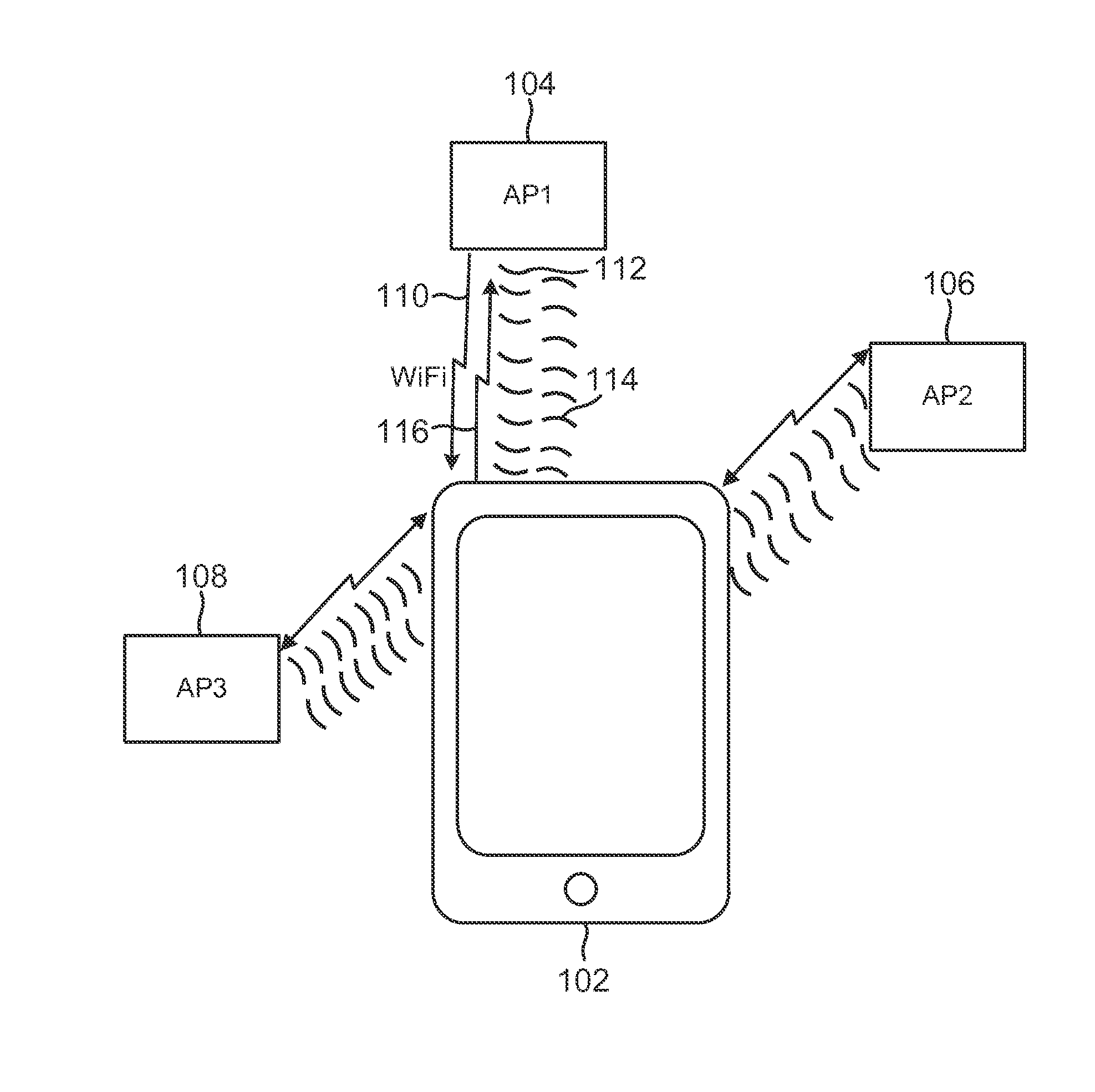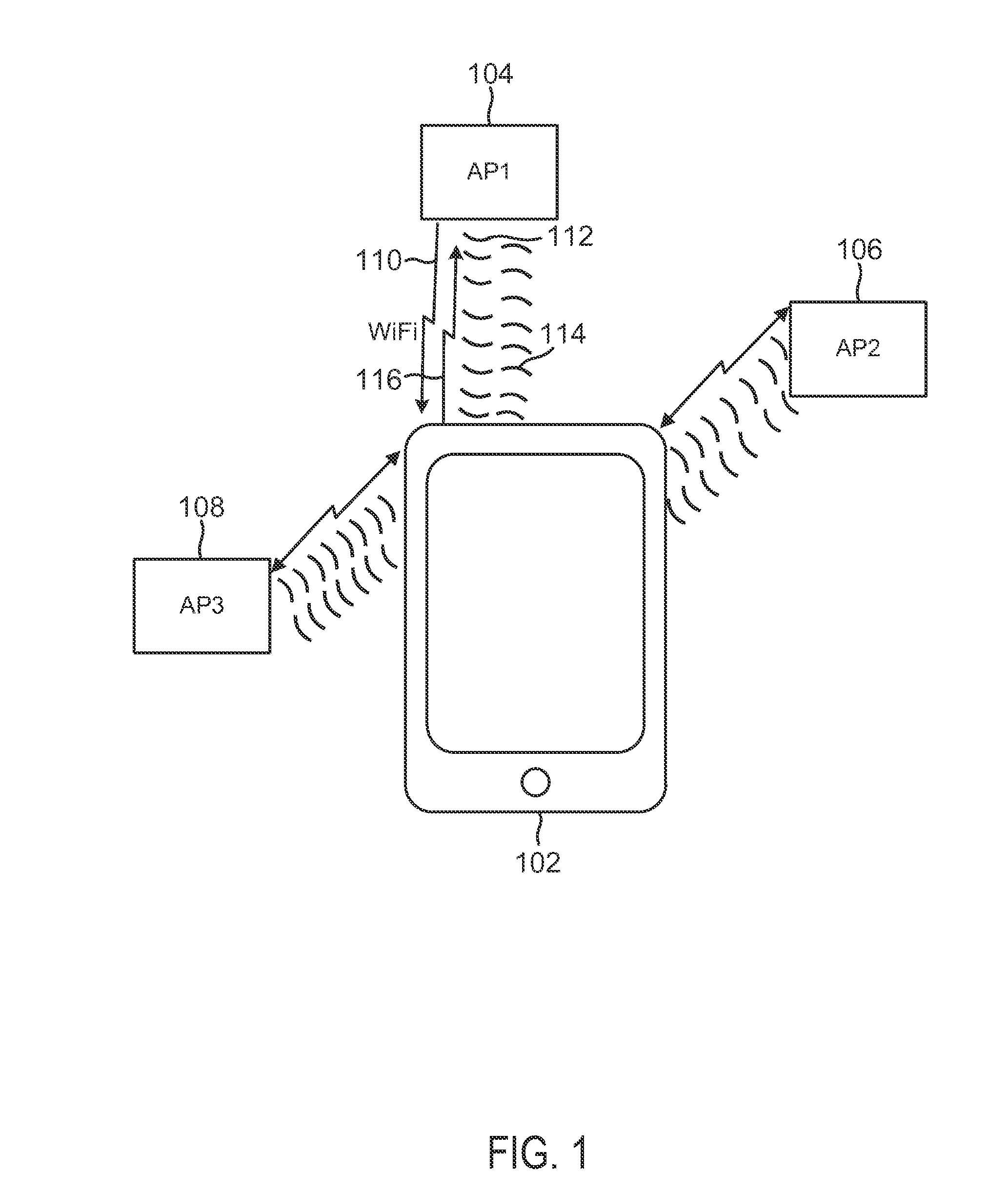Ranging using wi-fi and ultrasound measurements communication
a communication device and ultrasound technology, applied in direction finders, instruments, acoustic wave reradiation, etc., can solve the problems of direct path us signal experiencing significant attenuation, easy inaccuracy of wifi-based ranging results, etc., to improve the accuracy of range measurement, improve the range determination between devices, and be easily deployed
- Summary
- Abstract
- Description
- Claims
- Application Information
AI Technical Summary
Benefits of technology
Problems solved by technology
Method used
Image
Examples
Embodiment Construction
[0022]Systems and methods are disclosed to use US (ultrasonic) and WiFi signals to estimate the range between WiFi-enabled devices or to estimate the position of WiFi-enabled mobile devices in WiFi networks. The devices in the WiFi networks may leverage US-capable sensors already existing on the devices. For example, many speakers and microphones used in smartphone are capable of operating as US transducers to generate and receive signals above the human-audible range in the US frequency. APs (access point) in WiFi networks may also be fitted easily with US transducers if they don't exist already. In addition, transducer arrays may be installed to provide directional capability such as Tx (transmit) beam forming and / or Rx (receive) DOA (direction-of-arrival) estimation on WiFi devices.
[0023]US ranging between devices may be performed using RTT or one-way measurements. To enable US ranging between a device and multiple US transmitters simultaneously, e.g., between a mobile device and...
PUM
 Login to View More
Login to View More Abstract
Description
Claims
Application Information
 Login to View More
Login to View More - R&D
- Intellectual Property
- Life Sciences
- Materials
- Tech Scout
- Unparalleled Data Quality
- Higher Quality Content
- 60% Fewer Hallucinations
Browse by: Latest US Patents, China's latest patents, Technical Efficacy Thesaurus, Application Domain, Technology Topic, Popular Technical Reports.
© 2025 PatSnap. All rights reserved.Legal|Privacy policy|Modern Slavery Act Transparency Statement|Sitemap|About US| Contact US: help@patsnap.com



